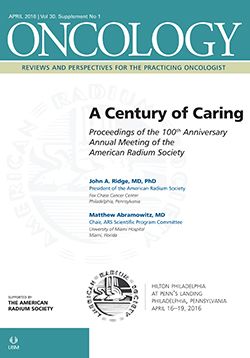(P035) The Prognostic Value of Pretreatment Peripheral Blood Neutrophil-to-Lymphocyte Ratio in Patients With Soft Tissue Sarcoma
While our results do not demonstrate high neutrophil-to-lymphocyte ratio to be an independent risk factor for worsened clinical outcomes, they do show high neutrophil-to-lymphocyte ratio to have statistically and clinically significant predictive value for RFS and OS in patients with recently diagnosed soft tissue sarcoma.
William H. Smith, Vishal Gupta, MD, Elizabeth G. Demicco, MD, Ilya Iofin, MD, Robert G. Maki, MD, PhD; Icahn School of Medicine at Mount Sinai
PURPOSES/OBJECTIVES: There has been growing interest in the prognostic value of peripheral blood neutrophil-to-lymphocyte ratio (NLR) in solid malignancies, but there are limited data on sarcomas. In this study, we sought to elucidate the relationship between pretreatment NLR and relapse-free survival (RFS) and overall survival (OS) in patients with recently diagnosed soft tissue sarcoma (STS).
METHODS: We queried our institutional pathology database for patients diagnosed with STS between January 2009 and December 2013. Included patients had pretreatment peripheral blood complete blood count (CBC) available within 1 month of surgery and prior to chemotherapy/radiation therapy (RT). Patients with rhabdomyosarcoma and solitary fibrous tumor histology were excluded. Patients were categorized into high- NLR (NLR ≥ 5) and low-NLR (NLR < 5) groups based on CBC. Clinical patient data were obtained, and OS and RFS were compared using Kaplan-Meier analysis and Cox proportional hazards analysis.
RESULTS: A total of 122 patients met the inclusion criteria for our study. Among these patients, 26 (21%) were included in the high-NLR group, and 88 (72%) formed the low-NLR group. Eight (7%) had CBC without differential and were included solely for multivariate analysis. After a median follow-up of 19 months, high pretreatment NLR was associated with increased risk of mortality (hazard ratio [HR], 2.499 [95% CI, 1.193–5.232]) and increased risk of recurrence (HR, 2.688 [95% CI, 1.093–6.611]). On multivariate analysis with Cox proportional hazards modeling, this effect was not found to be significant after correction for age, stage, and histologic subtype.
DISCUSSION: While our results do not demonstrate high NLR to be an independent risk factor for worsened clinical outcomes, they do show high NLR to have statistically and clinically significant predictive value for RFS and OS in patients with recently diagnosed STS. Longer follow-up and more patients are needed to validate these findings.
Proceedings of the 98th Annual Meeting of the American Radium Society -americanradiumsociety.org
